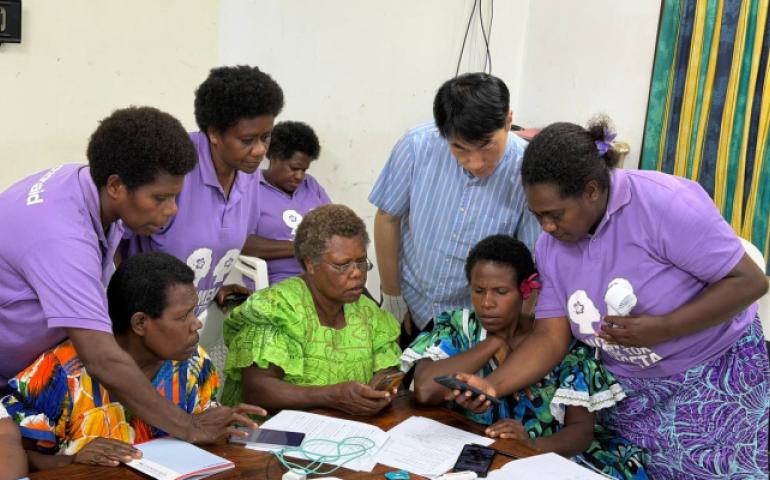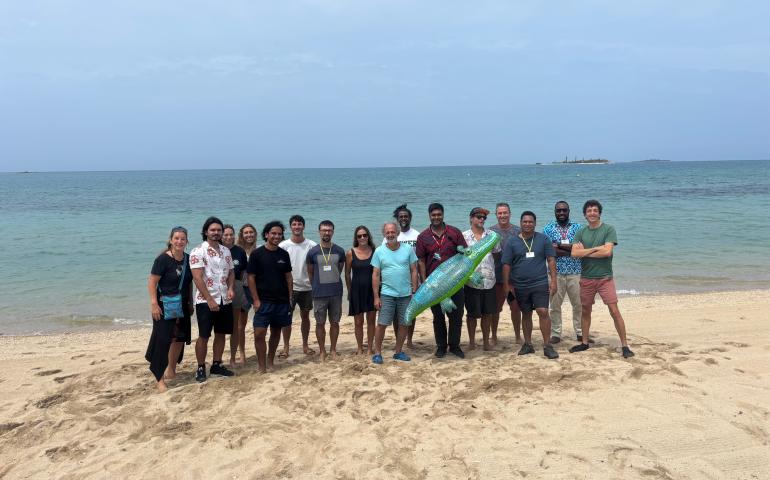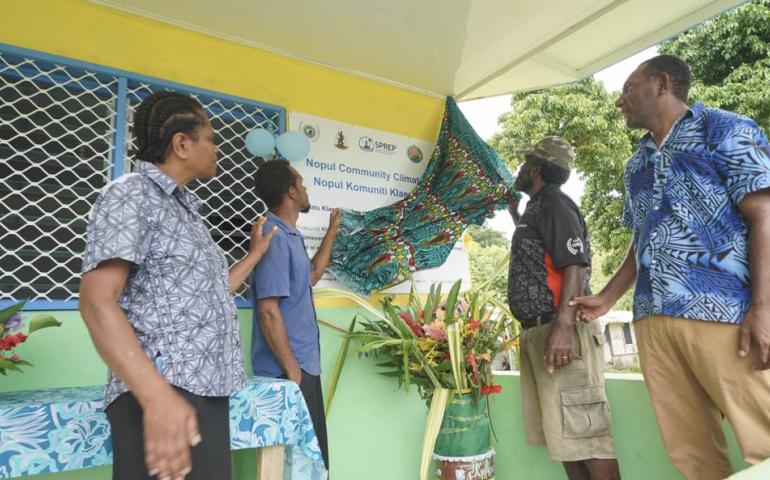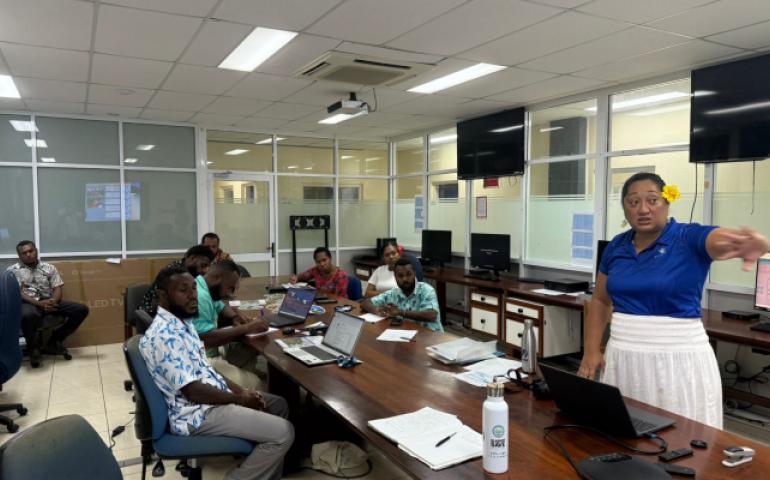Second Pacific Islands Climate Outlook Forum (PICOF-2)
PICOF-2 was hosted by the Fiji Meteorological Service at the Tanoa International Hotel in Nadi, Fiji from 17-18 October, 2016. The forum brought together national, regional and international experts from the Disaster Risk Reduction, Meteorological and Climate Services sectors.
The aim of a Pacific Islands Climate Outlook Forum is to provide a platform to consolidate seasonal forecasts from multiple sources by issuing a consensus regional outlook statement. This process allows its participants to better understand the science behind seasonal forecasts and to better appreciate the related uncertainties that are relevant for the measures applied to adapting and reducing risks to climate variations.
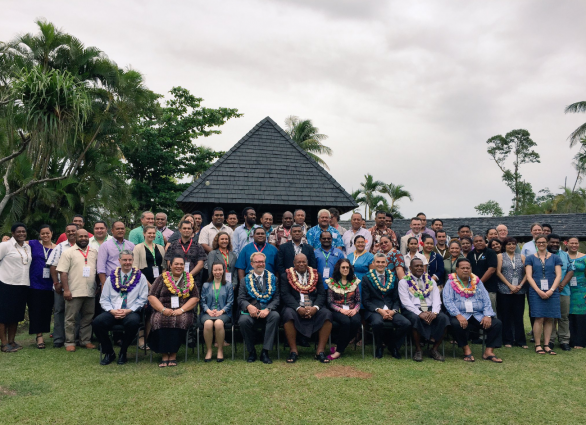
Objectives
The objectives of PICOF-2 were:
- to bring together national, regional and international experts on climate services and disaster risk reduction community;
- to discuss seasonal climate forecast guidance for the Pacific Islands (PI) region (e.g. SCOPIC, ICU, PEAC, APCC);
- to discuss application of climate information to the DRR sector; and
- to co-explore common approaches and best practices for climate services that can be extended throughout the Pacific Islands (PI) Region.
PICOF-2 comprised two days of technical presentations and discussion with the themes of 'looking back and learning' and 'looking ahead and preparing'. Participants on both days included national representatives from the Disaster Risk Reduction sector.
Consensus Regional Statement
Regional Statement on the Impacts of the 2015/16 El Niño and 2016/17 Climate and Tropical Cyclone Outlook for the Pacific Islands
Key Messages:
2015/16 El Niño
- The strong El Niño in 2015/16 was similar to previous events in 1997/98 and 1982/83.
- Significant impacts associated with the 2015/16 El Niño were anticipated and experienced across the Pacific Islands region, mainly associated with below normal rainfall and reduced sea level in the southwest Pacific. The central Pacific experienced increased rainfall and elevated sea level.
- These impacts came on the back of “El Niño like” conditions experienced throughout most of the region in 2014.
2016/17 Outlook
- For November 2016 to January 2017, weak La Niña to neutral conditions are expected.
- Below normal rainfall is forecast for the central Pacific (moderate-high confidence), and normal or above normal rainfall is possible for the islands in the northwest tropical Pacific and the region from Papua New Guinea southeast to the southern Cook Islands (moderate confidence).
- 8 to 10 named tropical cyclones are expected for the southwest Pacific region for the period November 2016 to April 2017 (this is near the long-term average).
- Typhoon activity for the western north Pacific is expected to be below normal to normal, from October to December 2016.
2015/16 El Niño Impacts:
Much of the Pacific Islands region, with the exception of the central Pacific, experienced below normal rainfall associated with the 2015/16 El Niño, and some countries are still experiencing lingering dry conditions. The El Niño came on the back of a generally drier-than-normal 2014 for many countries in the southwest and northwest Pacific region. In large parts of the southwest Pacific, the maximum rainfall anomaly (difference from normal) was experienced in January 2016 when rainfall over a large area was less than 40% of normal for the month.
Many impacts of the below normal rainfall were experienced across the region. These included drinking water shortages (from rain tanks, wells and streams) and water rationing, salt water contamination of freshwater lenses, sanitation and health problems, poor agricultural production, high food prices, and significant costs associated with government drought relief (e.g. for transporting containers of drinking water and emergency food supplies).
Sea levels during the 2015/16 El Niño were depressed for much of the region. In Micronesia, the sea level was as much as 40cm below normal. This exposed many coral reefs and, together with warmer-than-normal sea surface temperatures, contributed to significant coral bleaching.
Higher sea levels were experienced in the central Pacific, resulting in inundation and coastal erosion.
Tropical cyclones Pam and Winston, and Typhoon Maysak, also significantly impacted countries in the region in 2015/16, particularly Vanuatu, Fiji and the Federated States of Micronesia.
El Niño Southern Oscillation (ENSO) outlook for 2016/17:
The 2015/16 El Niño peaked in late 2015 and continued into 2016. The event decayed quickly during the austral autumn, ending around May 2016. The Pacific currently shows conditions which are ENSO-neutral, but with some indicators near La Niña thresholds.
Continued ENSO-neutral conditions or a weak La Niña is expected over the period November 2016 to February 2017. Thereafter, ENSO-neutral conditions are favoured.
A Consensus Regional Climate Outlook, and a sample of regional maps of rainfall, air and sea surface temperatures for November 2016 to January 2017, are presented in Appendix 1.
Tropical Cyclone Outlook:
For the southwest Pacific region, the expected number of named tropical cyclones for the period November 2016 to April 2017 is 8 to 10. This is near the long-term average. Tropical cyclone activity is slightly elevated for the Pacific Island countries to the north of the Coral Sea and close to the International Date Line near Tonga and Niue.
Typhoon activity for the western north Pacific is expected to be below normal to normal, from October to December 2016.
If conditions change over the coming months then the tropical cyclone outlook will be updated. All communities should remain vigilant and follow forecast information provided by their National Meteorological and Hydrological Service.
Coordination between National Meteorological Services and National Disaster Management Offices:
Across the Pacific Islands region, there is excellent coordination between National Meteorological and Hydrological Services (NMHS) and National Disaster Management Offices (NDMO). In most countries there are very well-defined responsibilities before, during and following periods of adverse climate impacts (such as those described above), with the NMHS providing climate guidance and the NDMO communicating key action-oriented messages to end users and coordinating response activities.
Fundamental to enabling preparedness and response activities is early communication of climate warnings at a ministerial level. This is part of the normal procedure for some, but not all, countries in the region.
A particularly useful mechanism for the communication and dissemination of climate information and warnings is through national approaches based on the UN cluster system, which is used in countries such as the Republic of the Marshall Islands, Vanuatu, Papua New Guinea and Solomon Islands and managed by the NDMOs.
Also, World Meteorological Organization (WMO)-sponsored National Climate Outlook Forums (NCOFs) have been held in some countries in the region, and these events have been very well received by attendees both from NMHSs and stakeholders representing multiple sectors and community representatives.
Recommendations from PICOF-2:
Regional forums such as the PICOF are very useful for sharing information, best practices, and lessons learnt. This should continue and be linked to the functions of the Pacific Islands Regional Climate Centre (RCC), when this becomes established. Pre-PICOF training was trialled in PICOF-1, and it is suggested that this is re-established.
Close working relationships between NMHSs and NDMOs are critical to effective warning of climate hazards leading to early preparedness. All countries throughout the region should continue to strengthen these relationships, as well as with other sectors through such mechanisms as cluster group meetings and NCOFs.
Indices of the strength of El Niño and La Niña are very useful for monitoring the status of ENSO. All NMHSs in the region should continue to closely monitor these indices, but it is also very important to continue to monitor regional, national and local rainfall patterns, cloudiness, sea surface and sub-surface temperatures, air temperatures, humidity, and sea level. Impact-based indicators such as food production, freshwater availability, fish catch, and human and animal disease outbreaks should also be well monitored, with the data stored in national impacts databases.
In addition to the production of national seasonal climate outlooks which are well communicated to NDMOs and other sectors, there is a need for simplified products and messaging, especially for rural and remote communities. NMHSs should continue to develop climate products tailored for specific users, relevant to their needs, and incorporating where possible elements based on traditional knowledge.
Regional forecasts (for example the Tropical Cyclone outlook) should continue to be well communicated to all NMHSs in the region prior to general release, to ensure consistent responses are provided to local media enquiries.
Further Information:
For more detailed country-specific information about the information presented in this statement, please contact your National Meteorological and Hydrological Service.
This statement was produced at the second Pacific Island Climate Outlook Forum (PICOF) held on the 17th and 18th of October 2016 at the Tanoa International Hotel, Nadi, Fiji. The forum had a specific focus on the impacts of the 2015/16 El Niño, and the regional climate and tropical cyclone outlook for 2016/17. Representatives at the forum were from regional organisations, National Meteorological and Hydrological Services, National Disaster Management Offices, other Fijian ministries and departments, and UN organisations.
This statement is consistent with the Nuku'alofa Ministerial Declaration for Sustainable Weather and Climate Services for the Resilient Pacific, which recognised the importance of Meteorological and Hydrological Services in support of relevant national needs, including protection of life and property, sustainable development and safeguarding the environment.
The same noted that weather and climate services are not an option but are a responsibility and a basic human right.
